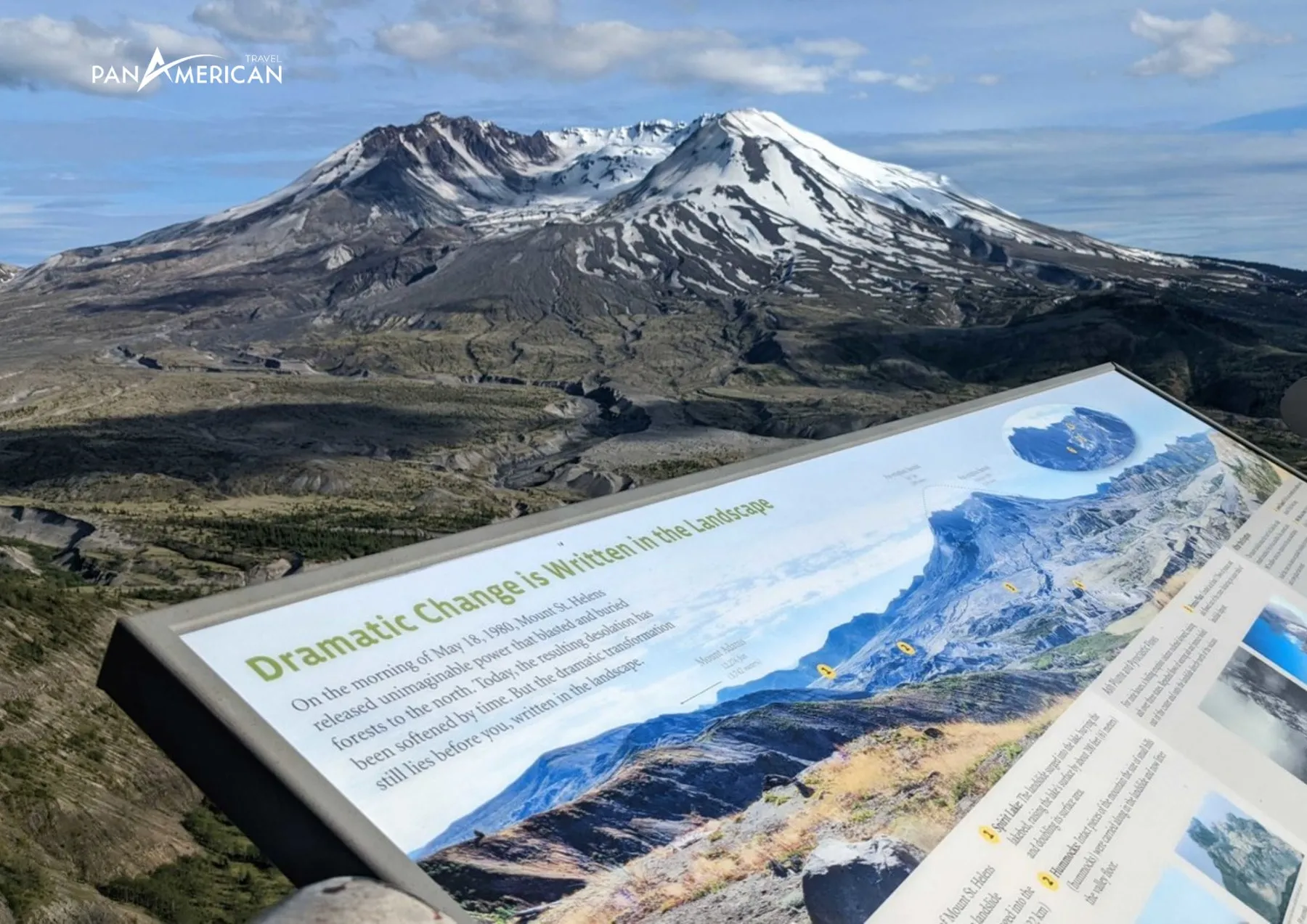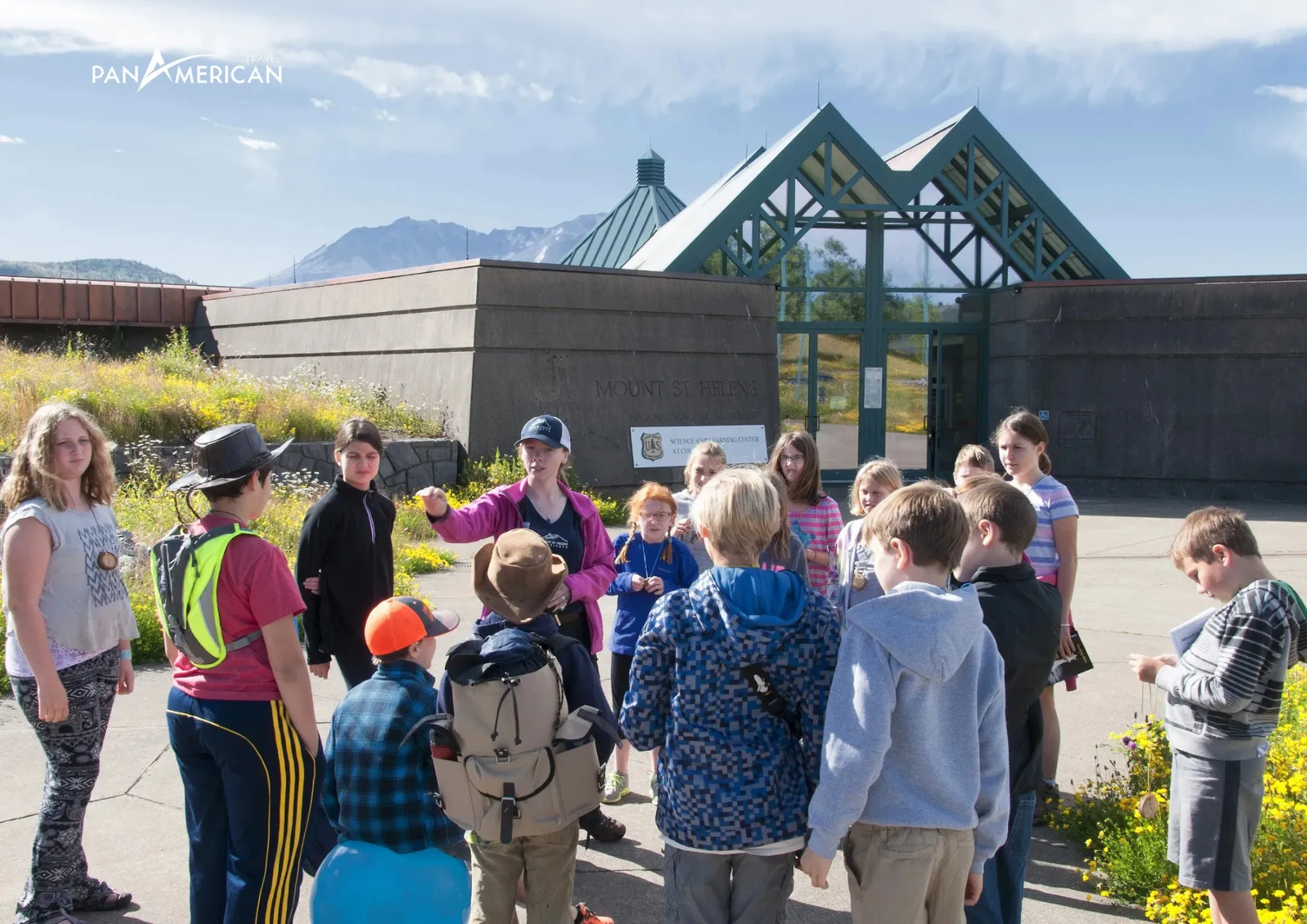Mount St. Helens, renowned for its historic 1980 eruption, is not only a tourist destination celebrated for its miraculous recovery but also harbors secrets beneath the surface. Among these, Ape Caves stands out as a must-visit for those passionate about exploring the underground world and seeking unique experiences.
Located deep underground, Ape Caves is the second-longest lava tube system in the United States, offering visitors the chance to discover unique geological wonders and learn about volcanic formation. Join “Du lịch khắp thế gian” (Travel Around the World) to equip yourself with the necessary knowledge for a safe and memorable exploration of Ape Caves.
Ape Caves: A Hidden Gem Beneath Mount St. Helens
Ape Caves, also known as the St. Helens Cave System, is a lava tube system situated south of Mount St. Helens in Washington State, USA. Formed approximately 2,000 years ago by lava flows from a minor eruption, Ape Caves presents a mysterious underground world with corridors, nooks, and unique rock formations.

Discovered in the 1950s, these caves quickly became a popular destination for adventure enthusiasts. Stretching over 2.5 miles (4 km), Ape Caves is among the longest lava tubes in North America, attracting visitors with its geological and biological diversity.
Your Detailed Guide to Exploring Ape Caves From A to Z
For a safe and fulfilling exploration of Ape Caves, thorough preparation and understanding of the following tips are essential:
1. Pre-trip Preparation
- Research Information: Learn about Ape Caves, including its formation history, geological features, exploration trails, and safety precautions.
- Book Tickets in Advance: Especially during peak season, booking tickets in advance ensures you secure your desired visit slot.
- Prepare Equipment:
- Flashlights: Flashlights are indispensable for cave exploration. Bring at least two (one main, one backup) with fully charged batteries. Headlamps are ideal as they leave your hands free.
- Footwear: Choose hiking boots or trail shoes with good traction to prevent slipping on the rocky ground.
- Clothing: The temperature inside the caves is quite cold (around 7-10°C or 45-50°F), so dress warmly in layers for easy adjustment.
- Helmet: A helmet will protect your head from bumping against low cave ceilings or falling rocks.
- Gloves: Gloves protect your hands from scratches and keep them warm.
- Backpack: Carry a small backpack for water, snacks, a map, and essential personal items.
- Check the Weather: Monitor the weather forecast to ensure there are no heavy rains or thunderstorms on your visit day.
2. Choose the Right Trail
Ape Caves has two main trails:
- Upper Cave: Approximately 1.5 miles (2.4 km) long, this trail is relatively easy, suitable for beginners and families with children. You’ll witness unique lava formations like the “Meatball” and “Lava Falls.”
- Lower Cave: Also about 1.5 miles (2.4 km) long, this trail is more challenging, requiring good physical condition and climbing experience. You’ll navigate through rocky sections, low ceilings, and some crawling passages. This trail is ideal for adventurous individuals seeking a challenge.
Image: Map of Ape Caves showing the Upper Cave and Lower Cave routes
3. Safety First
- Go in Groups: Avoid going alone; travel with at least one other person for mutual support in emergencies.
- Follow Instructions: Listen to and adhere to all instructions from park rangers or guides.
- Walk Slowly and Carefully: Observe the path closely, avoid running, jumping, or climbing in unsafe areas.
- Mind the Ceiling: Some sections have low ceilings, so duck down to avoid collisions.
- Pack Out Trash: Maintain cleanliness; take all your trash out of the cave.
- Do Not Touch Rock Formations: Cave formations are fragile; avoid touching them to preserve their natural beauty.
- Report Incidents: If any incident occurs, immediately notify park rangers or those around you for assistance.
4. Unmissable Experiences
- Explore Unique Lava Formations: Ape Caves is home to many peculiar lava formations, such as the “Meatball,” “Lava Falls,” “Skylight,” and “Cast.”
- Learn About Cave Ecosystems: Despite the absence of sunlight, Ape Caves is a habitat for various animals, including bats, spiders, and insects.
- Take Souvenir Photos: Don’t forget your camera or phone to capture memorable moments during your exploration.
How to Get to Ape Caves?
Ape Caves is approximately a 2-hour drive from Portland, Oregon, and about a 3-hour drive from Seattle, Washington. You can travel by private car or rental car.
- From Portland: Take Interstate 5 (I-5) north, then merge onto WA-503 east. Continue on WA-503 until you see signs for Ape Caves.
- From Seattle: Take Interstate 5 (I-5) south, then merge onto WA-503 east. Continue on WA-503 until you see signs for Ape Caves.
Best Time to Explore Ape Caves
The best time to explore Ape Caves is during the summer (June to September) when the weather is warm and dry. However, this is also peak season, so booking tickets in advance is recommended to avoid sold-out slots.
In winter, Ape Caves may be closed due to severe weather or snowfall. Before visiting, check the U.S. Forest Service website for the cave’s current operating status.
Explore Nearby Attractions
After exploring Ape Caves, consider visiting other attractions in the Mount St. Helens area, such as:
- Johnston Ridge Observatory: An observatory near the volcano’s crater, offering panoramic views of the area affected by the 1980 eruption.

- Spirit Lake: A lake dramatically altered after the eruption, boasting a pristine and mysterious beauty.
- Mount St. Helens Visitor Center: A center providing detailed information about the volcano’s history and the 1980 eruption.

Conclusion
Exploring Ape Caves is a unique and memorable experience, offering you the chance to discover a mysterious underground world and learn about volcanic formation. With the tips shared in this article, “Du lịch khắp thế gian” (Travel Around the World) hopes you have a safe, fulfilling, and memorable trip. Are you ready to explore this hidden gem beneath Mount St. Helens?